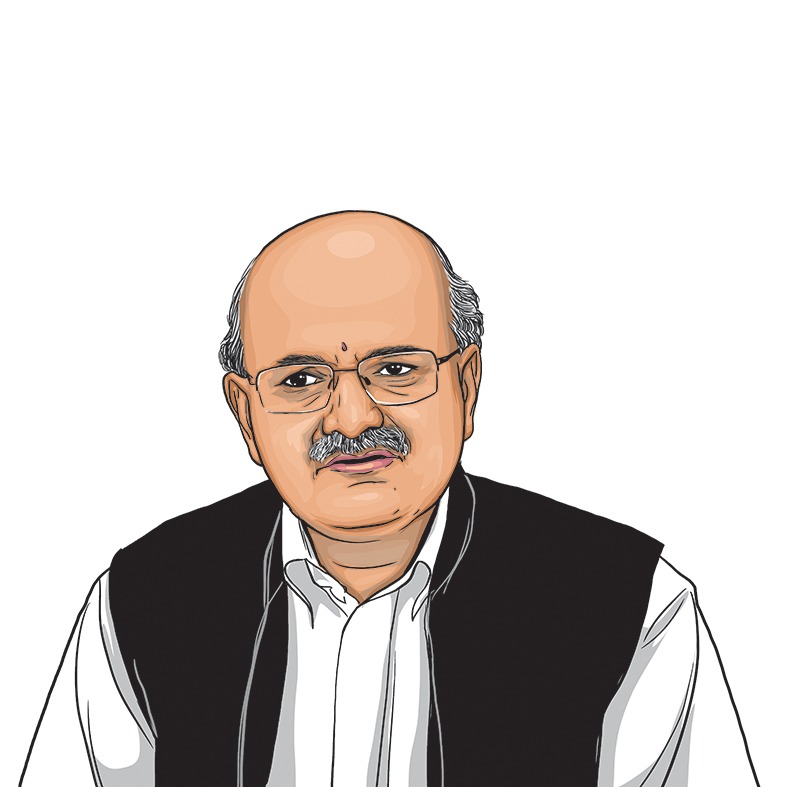Opinion Urban planning in India is restricted to land-use planning. This needs to change
Our “Viksit Bharat” goal of becoming a $30 trillion economy by 2047 will require cities to both accommodate and proactively enable most of this growth
 Many Indian cities also face serious problems of air pollution. City plans must, therefore, include an environmental management plan, especially an air pollution management plan.
Many Indian cities also face serious problems of air pollution. City plans must, therefore, include an environmental management plan, especially an air pollution management plan. Cities are critical for India today. Our “Viksit Bharat” goal of becoming a $30-trillion economy by 2047 will require cities to both accommodate and proactively enable most of this growth. If we are to meet our climate commitments of reaching net zero by 2070, and effecting significant greenhouse gas (GHG) reductions by 2030, cities will have to be at the forefront of the action needed. Given our demographic dividend, we have to find jobs for the young population. Most of the job opportunities will also emerge in cities. Finally, the planet is vulnerable to all kinds of disasters, and cities, with their higher population densities, are the most vulnerable. This was most evident during the pandemic. This means cities have to be resilient like never before.
It is in this context that India must look at how it has been planning and managing its cities so far, and what changes, if any, are needed. Do our cities need a different approach? Are we focussing adequately on the economic drivers or limiting ourselves to land-use planning? Are we thinking adequately about natural resources and the kinds of limits they impose? Are we focussing attention on all our cities or limiting ourselves to a few of the larger ones? These are some of the burning questions that have to be answered.
Let’s start with our planning process. The current planning systems primarily emerged during the mid-1800s when plague hit several cities and sanitation challenges compelled us to look at better planning of our cities. Hence, it was a public health issue that led to the start of a structured planning process in the country. It may be for this reason that planning currently tends to focus largely on land-use planning, or how different parcels of land can be used. Any deviations from this are not generally permitted, except through a lengthy approval process. But we refer to cities as our engines of growth. People move to cities in search of jobs, or livelihoods, and not so much in search of a better living environment. Yet our master plans, which are supposed to be the primary planning documents of a city, and have legal sanctity, are not derived from any longer-term economic vision or a plan to develop them as “Economic Growth Hubs”. The master plans tend to make projections of population growth based on past trends and identify infrastructure/service needs based on such projections. There is no mechanism to factor in the rapid growth that the country currently aspires for in the urban planning process, and no economic vision is outlined.
This is a serious weakness that needs correction. Planning must start from a structured exercise outlining an economic vision that identifies the key economic drivers for a city in the next 20–50 years. This should be followed by assessments of population growth based on the number of jobs that are likely to be created. This will provide a basis for determining the infrastructure needs and land requirements for different purposes. In the absence of such an exercise, land-use plans lack a credible basis.
This is not all. With a growing urban population, cities are facing shortages of natural resources. Planning must undertake a natural resources budgeting exercise and ensure that there is adequate supply to meet needs. Alternatively, it should plan for demand management measures that ensure optimal use of limited natural resources. Every city has a limited carrying capacity and it is important to ensure that the planning process recognises this.
Similarly, given the growing importance of climate change and the need for cities to be at the forefront of meeting our commitments, every city needs to have a climate action plan that spells out its pathways for enabling growth with lower emissions. It should also present roadmaps for dealing with the vulnerabilities arising from climate change.
Many Indian cities also face serious problems of air pollution. City plans must, therefore, include an environmental management plan, especially an air pollution management plan. A big contributor to air pollution is the transportation sector. National policies have recommended greater use of public transport and non-motorised modes as a way of dealing with congestion and air pollution. It is, therefore, important that every city also develop a “comprehensive mobility plan” that shows how it proposes to nudge a shift towards more sustainable modes of travel.
While simple land-use planning can be limited to the administrative boundary of a city, we find that a large share of urban growth is taking place outside municipal boundaries. Economic planning must, therefore, take into account a much larger region. The economy of any urban area has a close linkage with that of the surrounding rural areas. These linkages must be recognised and taken into account. Similarly, smaller cities have an extremely important role in India’s Viksit Bharat ambitions, because major manufacturing activities can only come up in smaller cities where large land requirements would be more affordable. The planning process must also recognise that smaller cities have to be part of a larger regional plan.
Our urban planning today is rather outdated, largely restricting itself to land-use planning, within the administrative boundary of cities. This is not adequate in the current context, especially given our ambitious developmental goals and the imminent climate threats. Clearly, these need to change towards a more modern approach. This will require changes in our current planning laws and regulations. It will also need a change in our educational programmes, which have to develop the kind of talent the country will need in the years ahead. Thus, there is a clear case for re-thinking our cities as “economic growth hubs” for a Viksit Bharat.
Subrahmanyam is CEO, Niti Aayog and Agarwal is distinguished fellow, Niti Aayog and professor of practice, ISPP






